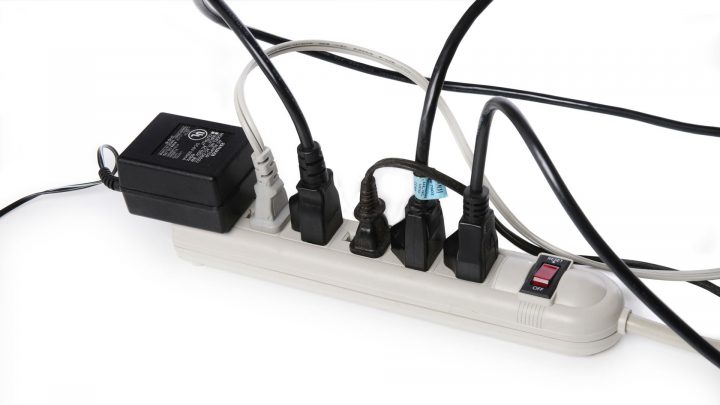Many electronic devices continue to draw power when they're turned off. Some of these are intentional, i.e. your television remote will only work if there's power in the television to receive signals. Unfortunately this standby power wastes a tremendous amount of energy … or roughly 68 billion kilowatt-hours of electricity wasted a year, generated by 37 power plants releasing over 97 billion pounds of carbon dioxide released into the atmosphere.

This vampire energy represents about 5% of the energy consumed in the US and costs consumers more than $3 billion per year. Breaking this down further, vampire energy used by electronics in passive mode, i.e. the clock on your microwave, or standby mode when you schedule your VCR to record a show, account for 5 to 8% of your home's total electricity or roughly one month's electricity bill.
What Does Vampire Energy Cost?
Vampire energy loss is growing as we add more and more electronic gadgets to our home. As manufacturers compete to capture market share, they're designing products that capture your attention. They don't always include efficient power usage in the design or components, because consumers rarely make the connection. We pay the price with unnecessary standby power that shows up in our monthly electric bill but we probably attribute the high bill to larger appliances like the refrigerator.
Let's look a sampling of electronic devices and the amount of electricity they consume.
- Televisions consume lots of energy and yet we only watch them for a few hours a day. A plasma TV can cost $160 per year just to run in standby mode. For more details on HDTV power use, see CNET's energy efficiency guide. And don't forget the devices attached to your TV, like the VCR in standby mode which costs more than $10 per year.

- Computers are even more complicated with their different modes of sleep – sleep, standby, hibernation, hybrid sleep, safe sleep and they can easily cost $35 or more per year. CNET has a series of reviews for desktop computers, laptop computers and monitors (follow link above).
- Electric toothbrushes and cellphone chargers use less than a kWH per day or $5 per year. Multiply each of these by 4 family members x 4 personal devices and that can add up quickly, to $80 a year.
How to Reduce Your Vampire Energy Losses?
Guess what? There are electronic devices to help you reduce your energy consumption. You've probably got several power strips in your home already but to date, you're using them to plug in all the gadgets. If you plug all your computer peripherals into the same power strip as your computer, you can turn one switch off and effectively shut down many devices … but make sure to power down your computer first. You can upgrade to a SmartStrip (get more info at SmartHomeUSA.com) which monitors your computer and automatically powers down the other devices when you shut off your computer.

Here are some basic tips for those who want to reduce power without buying another gadget.
- Unplug appliances directly from wall outlets when not in use. Plug electronic devices into a power strip or two, and switch them off after you finish using them. Don't worry as this won't harm your electronics.
- If you're not going to be using your computer for a while and don't want to shut it down, turn off the monitor. Screen savers don't reduce the amount of energy used.
- Reduce the brightness of your TV and computer screens by half, which can reduce their energy use by 30%.
- Turn off lights when you're not using them, especially the hallway lights … one my personal hot buttons!
- Try to use natural light whenever possible during the day and turn lights off when not in use.
- Unplug all the chargers – for your phone, toothbrush, PDAs, portable tools, when not using them. This can be a challenge so what I'm planning to do is set up power strips near the front door and in the bathrooms, where most of these devices are currently plugged in.
- When buying new appliances, make sure they have earned the EnergyStar® rating, using less energy, sometimes half as much, to perform their normal duties.
The ENERGY STAR® label is found on the appliance itself or the box it comes in. You can also check the yellow Energy Guide Label that shows how much energy the appliance will use and compare it with others.
ENERGY STAR ratings can be researched on the web. They should be a key factor in purchasing high energy appliances like refrigerators and air conditioners. Ratings are also available for home building materials that don't use electricity, like windows.





Leave a Reply